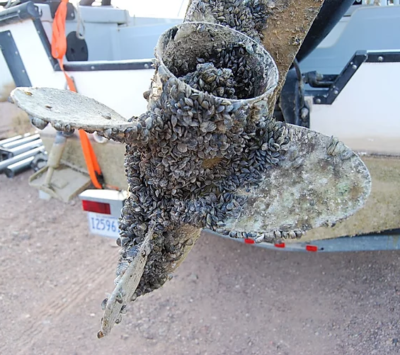In early July 2014, Paul Skawinski from Golden Sands Research informed us that zebra mussels were discovered in Mount Morris Lake. To quote Paul: “This is obviously a serious concern for the lake itself, but it also means that zebra mussels could move into Willow Creek and other points downstream. Please be vigilant in making sure boaters always drain all water from live wells, bait buckets, etc. and remove all plants and mud from their equipment before leaving any boat landing. It is also very effective to simply examine equipment and removable docks at the end of the season.”

Prevention is the best weapon against initial infestation. Once zebra mussels are introduced to a body of water, the is no way of eliminating them.
Female zebra mussels produce up to 1 million eggs per year! Transport by people is how they are spread to unconnected waters. Zebra mussel larvae are about the diameter of a human hair and are so small you can’t see them without a microscope. Zebra mussels will attach to solid substrates and can be easily transported on recreational equipment.
Zebra mussels disrupt the aquatic food chain of a lake. When zebra mussels enter into these fragile systems, their voracious filter feeding depletes the availability of microscopic organisms that play a critical part in each lake’s ecological food web. As a result, valued sportfish are impacted. Zebra mussels consume considerable amounts of these beneficial microscopic organisms and this creates less food for larval and juvenile fishes that support sport fisheries.
The sharp shells of zebra mussels present a hazard to the feet of swimmers.
Zebra mussels do costly damage to boat engines by clogging water inlets, leading to overheating.
Jerry Woodson has placed a zebra mussel plate sampler at the end of his pier to help monitor for this invasive nuisance. Still, please be vigilant in preventing this pest from entering our lake. Once it’s found, it’s too late.

